Praveen K. Vemula, MD, MPH, CPE, FACP, for the past decade a hospitalist and physician leader, currently with the 11-hospital WellStar Health System based in Atlanta, brought a master’s degree and a personal interest in public health to his medical-school training.
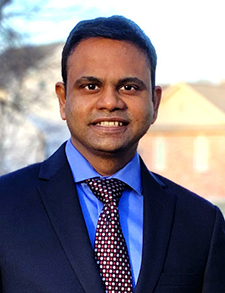
Dr. Vemula
But when he started working in hospitals, he found those around him didn’t seem as interested in incorporating public-health concepts into hospital medicine. “Now, hospitalists are paying more attention to public health,” Dr. Vemula said. And a lot of other roles are emerging to expand the skill set and responsibilities of hospitalists beyond their work at the individual patient’s bedside.
Hospitalists have been described, since hospital medicine’s origins 25 years ago, as the doctors who provide care to patients in the hospital.1 But in recent years that definition has been stretched in any number of directions.
They now practice in post-acute settings such as inpatient rehabilitation facilities, long-term acute hospitals, and skilled nursing facilities, addressing residents’ chronic, high-risk, acute medical needs. The hospital-at-home concept and other outpatient contexts, such as post-discharge clinics for patients who have left the hospital but still need medical follow-up, are more examples of moving beyond the hospital’s four walls.
Conceptually, hospitalists are also finding opportunities to improve quality for their hospitals and health systems, taking on roles as co-managers and consultants, and bridging gaps such as those between pediatric and adult hospitals for young patients who are in the process of aging out of pediatrics. Broader roles also include standards development, patient safety, health promotion, disaster planning, palliative care, and greater involvement in addressing the social determinants of health for discharged patients by connecting them with community resources.
Applications of telemedicine are another example. “We’ve been talking about virtual medicine for seven to eight years, but we learned through the pandemic that we can expand hospital medicine across distances and collaborate with intensivists while promoting patient safety—especially in rural settings,” Dr. Vemula said.
He has worn a variety of hats in his career, such as associate director of a hospitalist service, hospital director of medical affairs, chief medical officer, quality improvement director, and medical educator (with additional responsibilities for utilization management and physician engagement). He has additional training in epidemiology and an MBA. “As a residency-program director, I operated a special hospitalist leadership rotation.”
Next steps for hospital medicine
“I’m a practical guy,” Dr. Vemula said. “I want hospitalist groups to be more efficient. Balancing my public-health and physician perspectives made me a better hospitalist and a better physician leader. It broadened my view of how hospitalists can affect the overall quality of care and help their health systems become more efficient.”
The logical next step is to get involved in population health—with responsibility for the health of covered populations, broadly defined, under new value-based models of organizing and covering health care. This is a direction in which many health systems are now going, with greater attention to health promotion and disease prevention. Additional education may be needed to take a seat on the system’s population-health team, he said. If there isn’t one, hospitalists can help form one.
“If you look at the larger problems confronting our health care system, reimbursement in the future may force changes that further expand the hospitalist’s role beyond the hospital,” Dr. Vemula said. The role and definition of the hospital itself will continue to evolve toward caring for proportionally fewer patients, with only the most critically ill remaining in the hospital.
Things hospitalists know
Other hospitalists are looking beyond the practice of primary medical management of hospitalized patients, said Anika Kumar, MD, FAAP, FHM, assistant professor of pediatrics, hospitalist at Cleveland Clinic Children’s in Cleveland, and pediatric editor of this magazine. Staffing an acute rehab hospital is one of Dr. Kumar’s new roles.
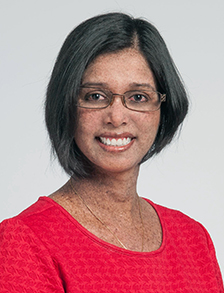
Dr. Kumar
“I provide the medical care where acute medical needs have not completely gone away after discharge from the acute hospital. I round every day for a week at a time on the patients with greatest medical needs,” she said. Goals for this service include smooth transitions to post-acute care and meeting higher-complexity patients’ unmet needs for post-discharge care.
Another example is the preoperative evaluation of patients who are scheduled for surgery. That is traditionally done in an outpatient clinic setting. “There are things I know as a hospitalist that are very important to surgical care, things that I need to address preoperatively, perhaps working alongside the anesthesiologist. We may be more cognizant of some of these issues than other specialists,” Dr. Kumar said.

Dr. Reddy
Tara N. Reddy, MD, a hospitalist with the Northwestern Medical Group in Chicago, is part of an eight-hospitalist service that has evolved to address the perioperative care of hospitalized patients. “We are the medical-consultation service when the patient comes into the hospital. We do risk stratification, we optimize the patient for surgery, we talk to the surgeons and help them understand the comorbidities,” she said.
“I think we’re valued as members of the surgical team, and we allow the surgeon to focus on other things. We’re being asked to do more assessments and consults than before. Knowing how the system works, hospitalists can get things done quickly and enhance throughput. We get asked about a variety of medical issues. For example, acute kidney injury, troponin elevation—really, any patient complexity is part of our assessment.”
SHM understands these evolving roles and has addressed the need for additional support among its members, Dr. Kumar said. This includes opportunities for professional development at the annual conference and in webinars. Converge, scheduled for Nashville April 7-10, includes a track, “Beyond Four Walls”, that will explore less traditional, high-impact, emerging roles in which hospitalists have been identified as leaders.
“For those of us who were hospitalists and then went into these other areas—at the core, we’re still hospitalists,” Dr. Kumar said. “There are all these other places we can diversify outside of the hospital and within the health care system. I speak for the vast majority of my colleagues when I say our goal is still to provide high-quality care that addresses the safety and experience of our patients.” The new frontiers are just an extension of that.
Transition to adulthood
With medical advances in the pediatric treatment of patients with complex illnesses, more of these patients are growing into adulthood and transitioning from children’s to adult hospitals and care teams. Patients diagnosed with a chronic condition during childhood and their families often form healthy therapeutic relationships with the providers who managed their care, and as a result, transitions and transfer of care to a new team of adult-medicine providers can be difficult, said Michael J. Beck, MD, FAAP, a med/peds-trained hospitalist at Hershey’s Children’s Hospital and Penn State University in Hershey, Pa.
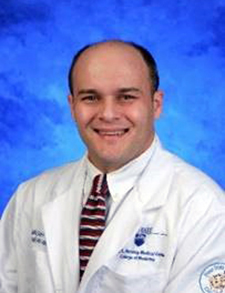
Dr. Beck
Some specialists are credentialed to provide care within certain age groups, and many sub-specialties are in short supply, Dr. Beck said. “The system is going to need adult providers for these patients.” Med/peds hospitalists can help initiate transition-of-care conversations or even initiate the transfer process.
Pediatric patients are being discharged from the hospital sicker and faster, often with pending labs or studies. As pediatric care becomes increasingly regionalized, a patient’s primary care provider is often two or three hours away from pediatric subspecialty expertise. Dr. Beck runs a Pediatric Hospital Discharge Clinic designed to bridge some of these gaps.
“Our clinic’s mission is to restore health and return patients safely back to their communities and families. I see my role as not just promoting quicker discharges, but also safer discharges, by assuming greater responsibility to work with primary care physicians and families.”
There are plenty of ways to be innovative in this area, Dr. Beck said. “As a hospitalist with 10-plus years of experience, it required challenging my mental model of what it meant to be a hospitalist, developing new competencies, and adopting new attitudes and behaviors. I had to learn how to start an outpatient clinic and justify the creation of a spanner position for a nurse case manager to work with inpatient case managers and outpatient providers,” he said.
“I’m still a hospitalist. I still round on patients and understand the demands faced by hospitalists. However, since I now work in the outpatient space, I have a better appreciation for the demands faced by outpatient providers.”
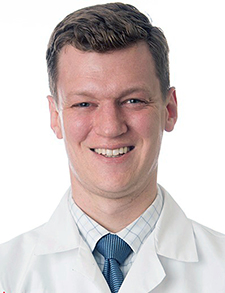
Dr. Stehouwer
Nathan Stehouwer, MD, a med/peds hospitalist at University Hospitals in Cleveland also affiliated with Rainbow Babies & Children’s Hospital, has tried to bridge some of these same kinds of gaps between peds and adults with a consultation service.2 “There is a subpopulation of patients, known to hospital staff, which receives a disproportionate amount of inpatient care in pediatric hospitals,” he said.
A lot comes down to helping families navigate the system, Dr. Stehouwer said. How do consultations work in pediatric versus adult institutions, or inpatient versus outpatient? “Every health system handles these questions differently.”
Hospital at home
The hospital at home is a growing concept, although it is still defining its interface and involvement with hospitalists. Patients who meet published criteria qualifying them for acute hospital care but whose clinicians believe they can be managed at home with the provision of hospital-level services are candidates for hospital at home. That care can include access to supplemental oxygen, laboratory services, home intravenous therapies, X-rays, and other diagnostic imagery, said Andrew Dunn, MD, MPH, SFHM, MACP, chief of the division of hospital medicine at the Mount Sinai Health System in New York.
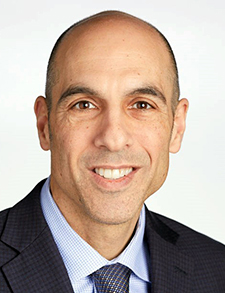
Dr. Dunn
Qualifying patients need to receive two in-person encounters with providers each day. The patient also needs 24-hour (virtual) access to a physician and access to a home visit from a clinician in a crisis, with a higher level of care than traditional home-health care provides. Mount Sinai worked with home-health nurses in the community but has since moved toward hiring its own staff.
“We’re also transitioning from mostly in-person medical visits to mostly telemedicine. That’s a new challenge for the technology,” Dr. Dunn said. “But since it can take 90 minutes or more just to get from Brooklyn to the Bronx, telemedicine is an essential component of our model.”
The hospital at home helps free up beds in the hospital for patients who need to be there, and a growing body of research has documented decreased lengths of stay, lower readmission rates,3,4 and higher patient satisfaction. “The potential is large, and feedback from patients is extraordinarily positive. It’s a great opportunity for hospitalists to find their niche, just as some doctors love the observation unit or co-management,” Dr. Dunn said.
But there’s also a learning curve to develop the expertise—both clinical and logistical—for managing care at home. “In the big picture, clinical management is very similar to what we do every day as hospitalists, but the logistical expertise includes relationships to payers and coverage.”
The right kinds of patients
Hospitalists want to know what kinds of patients are best for this approach, Dr. Dunn added. “Ones to avoid are those who need multiple specialty consults or multiple imaging sessions or whose course is uncertain.” But those who need basic imaging and are receiving oxygen, intravenous therapy, durable medical equipment, or physical therapy are good candidates.
Financing is a challenge currently, with variable coverage from insurers, although Medicare’s diagnosis-related group (DRG) payment and payment bundles (under a current pandemic-related emergency waiver) are the same whether the patient is in the hospital or hospital at home. The Acute Hospital Care at Home program was launched by the Centers for Medicare & Medicaid Services in Nov. 2020 for more than 60 listed medical conditions, with a growing list of fully waivered health care organizations and a requirement to conduct screening protocols before admission.
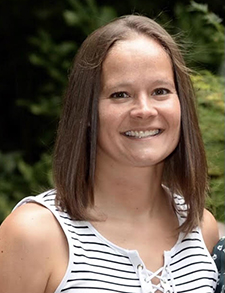
Dr. Murphy
Hospitalist Stephanie Murphy, DO, is the medical director of the hospital at home program for Atrium Health, a hospital system based in Charlotte, N.C. “I’ve been working beyond traditional hospitalist roles for six years,” Dr. Murphy said. “A group of our hospitalists sees this as our future—asking how can we deliver our care in new and innovative ways.”
Initially, there was some anxiety among hospitalists about the hospital at home and whether it was a potential competitor to hospitals. “But as we look at our population into the future, when the hospital beds they will need won’t be available, hospital at home will be essential. This can be a safe, satisfying, care-delivery model for patients,” she said.
“We’re staffed with three hospitalists per day who do traditional rounding virtually or act as the quarterback or air traffic controller. Most of our in-home visits are done by certified community paramedics who act as the vessel for our virtual care delivery. Honestly, they have years of experience and a broad scope of practice that doesn’t require constant supervision. They’re very comfortable going into the home.” Every home is different, which is one of the biggest differences from acute hospital care. “When going into the home, you need to quickly analyze its character, to figure out how to facilitate care delivery,” Dr. Murphy said.
“We need to make sure hospital at home connects with our acute-care facilities and the needs of those facilities. We need to target the diagnoses we can care for at home, and make sure we’re meeting with health system leaders regularly so that hospital at home is part of the conversation.”
References
- What is hospital medicine, and what is a hospitalist? SHM website www.hospitalmedicine.org/about/what-is-a-hospitalist/. Accessed February 2, 2022.
- Stehouwer N, et al. Consultation needs for young adults with intellectual and developmental disabilities admitted to an adult tertiary care hospital: Implications for inpatient practice. J Pediatr Nurs. 2021;60:288-292.
- Shepperd S, Iliffe S. Hospital at home versus in-patient hospital care. Cochrane Database Syst Rev. 2005;(3):CD000356.
- B. Leff, et al. Hospital at Home: Feasibility and Outcomes of a Program to Provide Hospital-Level Care at Home for Acutely Ill Older Patients. Ann Intern Med. 2005;143(11):798-808.
Larry Beresford is an Oakland, Calif.-based freelance medical journalist.
Amazing. Appears to be a return to what used to be General Internal Medicine when we practiced in all of these settings before.